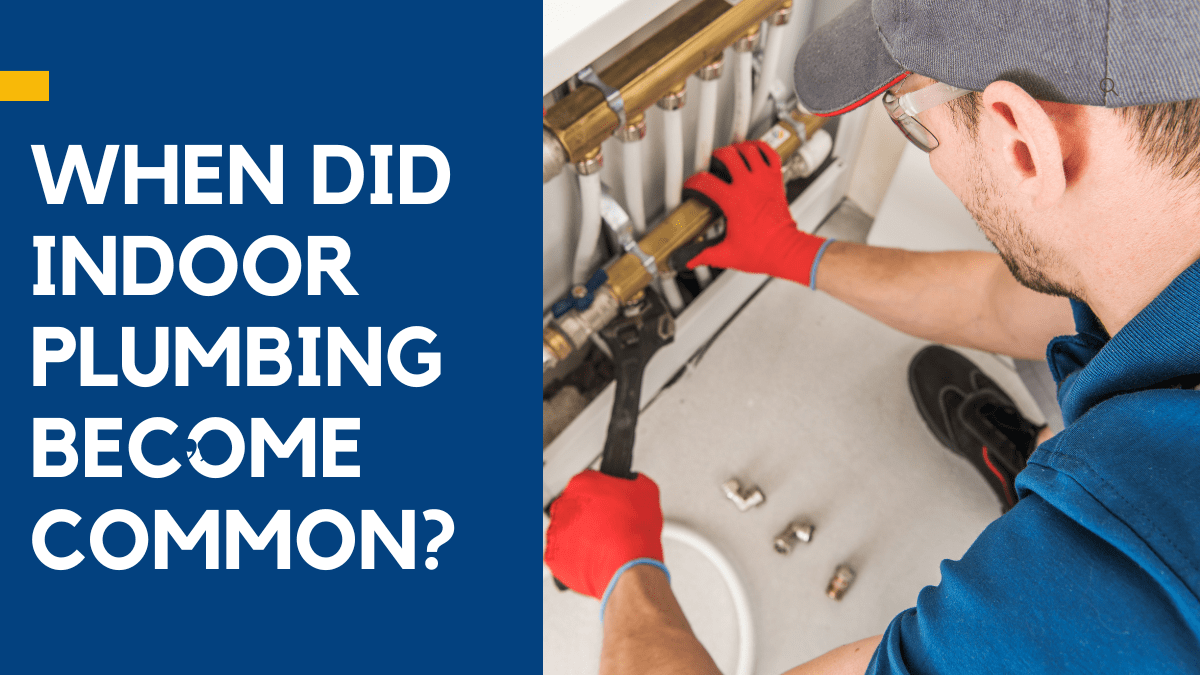Indoor plumbing became common in the United States and Australia during the early 20th century, with the most significant expansion occurring between the 1920s and 1950s. This shift was largely influenced by the growth of urbanization, economic development, and public health advancements, which increased access to indoor plumbing facilities in homes across both countries.
when did indoor plumbing become standard in America
In the United States, indoor plumbing began to emerge as a common feature in homes around the 1920s and became increasingly widespread by the 1940s and 1950s. The trend took off particularly in urban centers, where denser populations and higher risks of disease created a greater urgency for clean water and proper sanitation.
During this period, plumbing was not yet standardized in rural areas, where many homes still relied on outhouses or water pumped from wells. But as public health concerns escalated, particularly with outbreaks of typhoid and other waterborne diseases, government regulations began enforcing indoor plumbing in residential buildings. Cities like New York, Chicago, and Los Angeles led the way, with apartment buildings and new urban developments integrating indoor plumbing as a necessity. In these urban centers, plumbing installations helped mitigate health risks and contributed to a cleaner, healthier environment.
By the 1950s, indoor plumbing had become the standard in most new homes. Suburban expansion played a key role in accelerating this adoption, as the post-World War II housing boom provided an opportunity for families to move into newly constructed homes with all the modern amenities, including bathrooms with toilets, sinks, and bathtubs connected to a secure water supply and sewage system. Suburbanization created a wave of development across states, leading to indoor plumbing becoming a core component of the American Dream.
Rural Areas Catching Up
While urban areas saw relatively swift adoption of indoor plumbing, rural parts of the U.S. were slower to modernize due to economic limitations and geographic isolation. In the 1960s and 1970s, government programs provided incentives and financial assistance to install plumbing systems in rural homes. Infrastructure projects funded by federal and state governments aimed to equalize living standards across urban and rural areas. Programs like the Rural Development Act in 1972 helped provide grants for water and sanitation improvements, allowing rural families to install modern plumbing systems. By the end of the 1970s, most rural American households had achieved the indoor plumbing standard that had become the norm in urban areas decades earlier.
| Stage | Description | Time Period (U.S.) | Time Period (Australia) | Key Factors | Impact |
|---|---|---|---|---|---|
| Urban Introduction | Indoor plumbing begins in city apartments and buildings due to public health needs and dense populations. | 1920s | 1920s | Urbanization, public health regulations | Cleaner, healthier urban environments |
| Suburban Expansion | Post-WWII housing boom integrates indoor plumbing as a standard feature in new suburban developments. | 1940s–1950s | 1950s | Economic prosperity, suburbanization, middle-class growth | Higher living standards, suburban areas receive modern amenities |
| Rural Development Programs | Government grants and incentives help rural areas install indoor plumbing, extending standards beyond urban areas. | 1960s–1970s | 1960s | Federal programs, rural infrastructure investments | Equitable access to sanitation across urban and rural areas |
| Government Regulation | New building codes enforce indoor plumbing standards for all new construction, ensuring modernized facilities nationwide. | 1960s | 1960s | Building codes, sanitation requirements | Indoor plumbing becomes essential in all new housing and public facilities |
| Technological Advancements | Cost-effective materials like PVC and copper pipes make plumbing affordable, increasing accessibility in all homes. | 1960s onward | 1960s onward | Improved materials, cost reduction | Indoor plumbing becomes an affordable standard for both urban and rural households |
Factors Behind the Rise of Indoor Plumbing in America
Several critical factors contributed to the adoption of indoor plumbing in the U.S.:
- Public Health Initiatives: Public health was a major factor driving the need for clean water access and waste disposal. With diseases linked to poor sanitation and contaminated water, government authorities and health departments advocated for the installation of plumbing in residential areas.
- Economic Growth and Suburbanization: The post-World War II economic boom fueled suburban development, with housing featuring modern amenities as a selling point. Indoor plumbing became an essential feature in new homes, raising expectations for comfortable and sanitary living standards.
- Federal Programs and Regulations: Government policies encouraged indoor plumbing adoption by establishing minimum sanitation requirements and offering incentives for rural and lower-income communities to install plumbing systems.
- Technological Advancements in Plumbing: Improvements in plumbing technology, including new materials like copper and PVC, made plumbing systems more affordable and easier to install, which helped accelerate indoor plumbing adoption.
Widespread Adoption of Indoor Plumbing in Australia
Australia’s path to widespread indoor plumbing adoption mirrored that of the United States in many ways, though its timeline lagged slightly. In the early 20th century, Australian cities like Sydney and Melbourne began implementing centralized water and sewer systems. However, due to Australia’s smaller and more dispersed population, the process of bringing plumbing to rural and remote areas took longer.
In urban areas, particularly Sydney, Melbourne, and Brisbane, indoor plumbing was introduced in the 1920s and became a more common feature in homes by the 1940s. This trend paralleled public health campaigns and improvements in municipal infrastructure. The government recognized that providing clean water and sanitation facilities was crucial to preventing disease outbreaks, leading to municipal investments in water and sewer lines in urban centers.
Post-War Expansion and Standardization in Australia
After World War II, Australia experienced rapid modernization, and the federal government made significant investments in infrastructure to improve quality of life. Large-scale housing projects incorporated modern plumbing as a baseline feature, pushing indoor plumbing into the mainstream. By the 1950s and 1960s, it was expected that new homes would include bathrooms with hot and cold running water, flush toilets, and kitchen sinks with waste pipes connecting to a centralized sewage system.
In rural Australia, where homes had long depended on rainwater tanks, outhouses, and septic tanks, the shift to modern plumbing came more gradually. By the 1960s, state governments had started subsidizing plumbing improvements, particularly in farming and remote communities. The Australian government also took cues from the United States’ rural improvement policies, creating grants and support initiatives to ensure even the most isolated areas gained access to clean water and sanitation services.
Key Factors in Australia’s Indoor Plumbing Adoption
Several factors influenced the spread of indoor plumbing in Australia:
- Public Health Reforms: Similar to the U.S., the Australian government emphasized public health, leading to plumbing regulations that enforced minimum sanitation standards. Indoor plumbing was viewed as essential to maintaining public health, particularly in areas with high population density.
- Government-Driven Modernization: The Australian government took a proactive role, creating public housing projects and community development programs that made indoor plumbing a requirement for new housing, especially after World War II.
- Technological Improvements and Costs: Advances in plumbing materials, such as copper piping, and the creation of more efficient plumbing fixtures reduced costs, making it more feasible for average households to afford indoor plumbing.
- Increasing Social Expectations: As indoor plumbing became more common, Australians came to view it as a standard feature, not a luxury. This cultural shift, fueled by the rising middle class and post-war prosperity, solidified indoor plumbing’s place in modern homes.
Modern Standards and the Legacy of Indoor Plumbing
By the 1970s, nearly all American and Australian homes had indoor plumbing, fundamentally transforming daily life. Indoor plumbing brought a higher standard of hygiene and convenience, allowing for clean water access, waste disposal, and improved health. Today, indoor plumbing is considered essential for all homes, and building codes require comprehensive plumbing systems in both countries.
Conclusion
The widespread adoption of indoor plumbing in the United States and Australia reflects advancements in public health, economic growth, and government intervention. By the 1950s and 1960s, indoor plumbing was no longer an urban luxury but a residential standard that brought health and comfort to both countries. For Americans and Australians alike, modern plumbing remains a critical part of daily life, made possible by decades of development and investment in infrastructure and community welfare.

